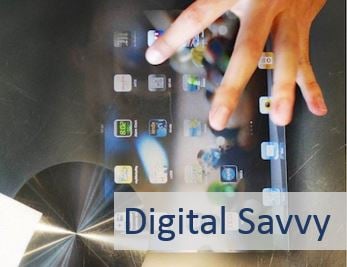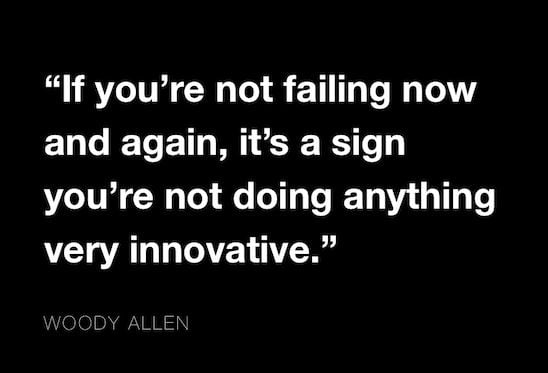 Thanks to guest blogger, Dr. Paul Beaudoin for sharing his expertise in online teaching. This article originally appeared in the May 2014 issue of Campus Technology.
Thanks to guest blogger, Dr. Paul Beaudoin for sharing his expertise in online teaching. This article originally appeared in the May 2014 issue of Campus Technology.
For over a decade, enrollments in online classes have steadily increased. According to a recent Sloan Consortium report, 7.1 million college students are currently enrolled in an online course -- and those numbers are expected to rise. To meet the demand, more and more faculty are being asked to teach blended or online courses -- even MOOCs. While most institutions have an online preparedness rubric for students, few have such a rubric for faculty who teach online.
It doesn't take long to discover that teaching in the blended or online learning environment is not a direct transfer of the traditional face-to-face class. The challenges of online learning often require a different set of skills that may not come easily to brick-and-mortar instructors. Here are six tried-and-tested strategies for becoming a better online teacher.
1) Maximize Your Digital Savvy
The online learning environment relies on technology to deliver education to the learner. Let the available technological tools help, not hinder, what you would like to achieve in your course. As you develop and deploy your course online, take time to discover the digital tools in your arsenal. Taking advantage of technology can help you save time, increase your efficiency and engage your learners at ever deeper levels.
 If your institution uses a learning management system, learn how you can harness the tools it comes with. LMS platforms can do everything from managing documents and administering tests and surveys to supporting blogs, wikis and multimedia. Knowing what your LMS does (and doesn't) do can go a long way toward developing a successful and engaging course.
If your institution uses a learning management system, learn how you can harness the tools it comes with. LMS platforms can do everything from managing documents and administering tests and surveys to supporting blogs, wikis and multimedia. Knowing what your LMS does (and doesn't) do can go a long way toward developing a successful and engaging course.
Paige Brooks-Jeffiers, director for innovative strategies at Kentucky Community and Technical College System, strives to showcase a variety of tools that faculty and students can use in teaching and learning. "I introduce them to tools both inside and outside the LMS," she said.
She begins by encouraging faculty and students to make the most of the native tools of the institution's Blackboard LMS, stressing the importance of crafting complete posts with links, images and references to corroborate their thoughts. She also points faculty to many free Web 2.0 tools such as polleverywhere.com, voki.com and padlet.com, as well as to places like allmyfaves.com and go2web20.net, where they can peruse hundreds of tools and find just the one that suits their needs.
2) Be an Active and Engaged Participant
A learner who feels isolated in the online environment is more likely to fail than one who feels connected to an online learning community. To help foster more personal connections, become an online presence for all your learners. Create an icebreaker for your course where you introduce yourself with a hobby, side interest or other tidbit that personalizes you. Engage with your learners on discussion forums by replying to their posts, asking them to expand on their ideas — or play "devil's advocate." Create a mid-course survey asking your learners how they are feeling about the course, or ask them to name topics of interest that fit within the course goals.
Don't hesitate to connect with those students who seem challenged by the course content, technology or online environment. Find those learners who have not engaged at the level you'd like them to be at, or who have poor assessment results. Send them an e-mail and ask if you can help with something. By participating in the online learning community you have built, you are showing learners they are not isolated.
"It is so important to connect with students at a personal level as much as you can, given the constraints of the online environment," said Mark Curcher, program director of 21st Century Educators at Tampere University of Applied Sciences in Tampere, Finland. Something as simple as using the student's name when replying to an e-mail or commenting on a post, blog or discussion board goes a long way towards making that personal connection, he pointed out. "I find it beneficial to refer to people by name and be specific about their projects rather than general."
Continued Curcher, "I use video quite a lot, especially screencasting, to give formative feedback on assessments. The personal video format is especially good for engagement and involvement and connects the tutor with the student no matter the distance between them. I find it much faster than tracking the changes in a document…. Occasionally, I will have live (i.e. synchronous) sessions, even across time zones, because it reduces feelings of isolation and in turn, reduces students withdrawing…. With so many tools like Google+, Skype, Zoom and similar tools to connect with your online students, there is no reason they should feel isolated and disengaged."
3) Reinvent Your Wheel
It takes a little creative thinking to transform face-to-face activities, lesson plans, lectures and assignments into online activities. Many Web 2.0 tools create learning experiences with impact, and students who have a social, behavioral or emotional connection with your material are more likely to retain it.
Can you imagine if tweeting was possible during the Crusades? This is what Kisha Tracy, professor of English studies at Fitchburg State University does for her course in world literature. "In an attempt to have students read actively and with a critical eye, I created an assignment called '@Crusades,'" she explained. "'@Crusades' is a Twitter-based activity students are required to participate in while they are reading the Crusades texts for class. Students are instructed to tweet their thoughts and observations, switching among Crusader names like WoLiPopeUrbanII, WoLiSaladin, WoLiRichardI, WoLiSaracens (generic Muslim soldier/s) and WoLiCrusaders (generic Christian Crusader/s) as appropriate." Students log in and post from the point of view of each of these characters, claiming credit for their posts by ending them with their initials, Tracy said.
"'@Crusades' is a Twitter-based activity students are required to participate in while they are reading the Crusades texts for class. Students are instructed to tweet their thoughts and observations, switching among Crusader names like WoLiPopeUrbanII, WoLiSaladin, WoLiRichardI, WoLiSaracens (generic Muslim soldier/s) and WoLiCrusaders (generic Christian Crusader/s) as appropriate." Students log in and post from the point of view of each of these characters, claiming credit for their posts by ending them with their initials, Tracy said.
"We then discuss how their posts can be factual, informative, witty, interactive among characters, taken directly from a text, thoughts inspired by a text, etc. They may use their imagination or adhere closely to the readings," she said, adding that she encourages the use of hashtags, which often lead to witty and thought-provoking commentary. Students also can attach images to their tweets. "The results of this assignment are invaluable," Tracy said. "By requiring active participation beyond the standard reading, students read with more purpose and with considerably more depth and enthusiasm, not only finding more to question and discuss but also remembering more of what they have read."
4) Include Your Learners in the Learning Process
Build a community of learners in your online classroom by designing projects that will actively include your learners in the learning process. Web 2.0 has transformed the way we connect with each other. Your learners will likely be comfortable with social media, wikis and any number of other tools, so think about including them in your course. Active collaboration, peer evaluation and absorbing discussions will give your learners a sense of being involved with each other. Engaging your learners will go a long way in making your course a successful one.
Curt Bonk, professor of instructional systems technology at Indiana University, pointed out that the MOOC format brings in learner perspectives from around the globe. "Teaching a MOOC or teaching online is perhaps the ultimate experience any instructor can have at the present time," he said. "When the e-mails, comments, votes, resources and ideas start coming from places like Oslo, Edinburgh, Cape Town, Melbourne, Dallas, Dubai, Homer (AK), Tetovo (Macedonia) and so on, there is freshness in realizing that people in all corners of the globe are seeking such knowledge. The savvy online or MOOC instructor can be a bridge to new human-human connections across countries and regions of the world. The instructor can be a concierge who provides resources and new learning paths on demand…. If many or most of those enrolled use just one or two ideas presented in the course, just imagine the potential worldwide impact."
5) Reassess Assessment
Like a traditional classroom, it is easy to develop exams and assign research papers for the online course. However, why not consider other ways to assess authentic learning? Consider creating small group projects, case studies or debates as ways to assess learning. If you feel ambitious, try having your learners create short video documentaries, podcasts or video blogs (Vlogs) that demonstrate their learning. To create this kind of material not only requires technological skills, but will also demand that your learners organize and unfold their learning in a coherent manner.
For Shoba Bandi-Rao, assistant professor of developmental skills at Borough of Manhattan Community College/CUNY, storytelling is an integral part of her English as a second language (ESL) classes. "My students have created digital stories on topics such as a festival/cultural event from their home country, their favorite family member or their favorite place in New York City," she said. Using free software such as Wevideo and Window's Movie Maker, her students combine e-text, audio, images and video to create their digital stories, she explained. "They shared their projects in class and had the opportunity to comment and receive feedback from their peers."
Bandi-Rao noted that digital storytelling makes the learning process more exciting by allowing her students to tap into their writing, speaking and creative skills. To her surprise, she also found that some of her shy students were eager and ready to communicate with their classmates through their digital stories. "I recommend using 21st century digital tools in your class to bring alive the ancient forms of storytelling," she said.
6) Realize It's Okay to Fail
Teaching online is an adventure and expect that not everything you do will work perfectly. Be open and flexible to change. Ask your learners what worked for them and what didn't. Use that information to modify, retool and redesign your online learning environment.
Talk to your colleagues who are teaching online courses. Find out what is working for them and share what is working for you. Brainstorm creative ways to redesign those components that need tweaking, or mine the web for suggestions. Online teaching is an organic process and it will evolves as technology changes, learner populations mutate and your online experience matures.
About the Author
Paul Beaudoin is an internationally recognized online education specialist and recipient of the Blackboard Exemplary Course award for 2013. He teaches at Fitchburg State University and Rhode Island College.


